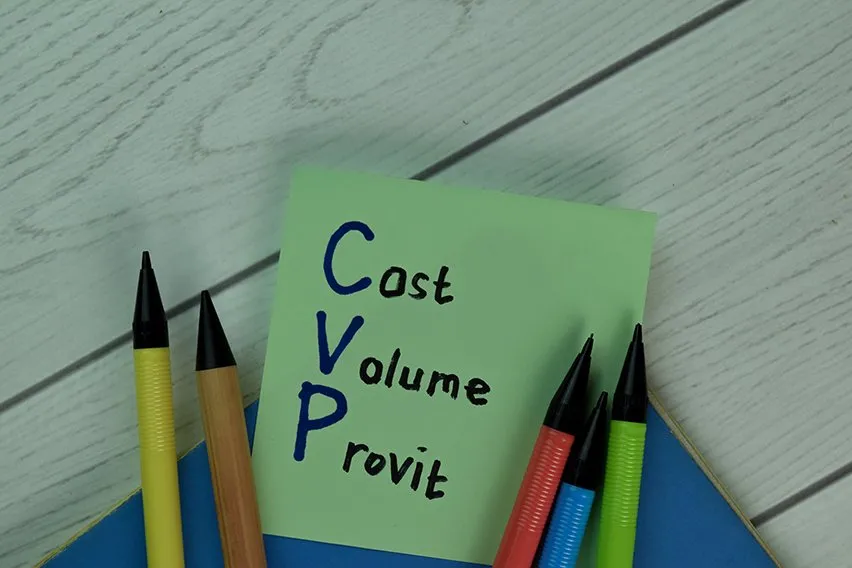What Is CVP Analysis (Cost-Volume-Profit) & How to Perform It?

When you’re running your own business it’s important to always have an eye on your bottom line.
A company’s profit is its lifeblood. After all, without profit a business would very swiftly cease to exist. When looking at your profit, there are a number of different analysis tools that you can use.
One such tool is known as a Cost-Volume-Profit Analysis, also known as a Break-Even Analysis. But what exactly is a CVP analysis? And how can you use it to benefit your business?
We’ll take a closer look at the definition and how to effectively perform this type of analysis.
Here’s What We’ll Cover:
How Is a Cost-Volume-Profit Analysis Used?
What Is the Contribution Margin?
What Is the CVP Break-Even Formula?
What Are the Assumptions Made While Performing the Analysis?
What Is CVP Analysis?
Cost-Volume-Profit Analysis, or CVP analysis, is a way for companies to figure out how changes in costs and sales volume affect a company’s profit. The costs considered can be both variable and fixed costs.
When armed with this information, businesses can have a better understanding of their performance. This is by looking at how many units they have to sell to either break-even, or reach a specific profit threshold. This allows businesses to understand their margin of safety.
Running a CVP analysis consists of using a number of equations. This is for price, cost and any other variables that are considered appropriate. These numbers would then be plotted out on an economic graph.

How Is a Cost-Volume-Profit Analysis Used?
A business would use a CVP analysis to figure out whether there is an economic justification for a product to be manufactured. To do this, a desirable profit margin is added to the break even sales volume. This would then lead you to the target sales volume that is needed to generate the desired profit.
You could then compare the product’s sales projections to the target sales volume. This is to see if it is worth manufacturing the product.
What Is the Contribution Margin?
The contribution margin is the difference between a company’s sales and its variable costs. You might calculate the contribution margin income statement to show the separation of your fixed and variable costs. This can be done with this simple equation:
Operating Income=Sales-Total Variable Costs-Total Fixed Costs
To make this clearer, you can expand this basic equation:
Operating Income=(Price x #Units Sold)-(Variable Cost Per Unit x Number of Units Sold)-Total Fixed Costs
So basically, the contribution margin shows the portion of sales that go towards covering the company’s fixed costs. Any revenue that remains after covering the fixed costs can be considered the profit generated. This would mean that for a business to be profitable, the contribution margin must be higher than the total fixed costs incurred.
It is important to understand that the contribution margin and the gross profit margin are not the same thing. The difference is relatively simple:
The gross profit margin is the difference between sales and cost of goods sold. The cost of goods sold includes every cost – both fixed costs and variable costs.
The contribution margin only considers a businesses variable costs.
So by calculating both, you can obtain valuable, but different information.
What Is the CVP Break-Even Formula?
Perhaps the most important statistic that the CVP formula can be used for is the break-even point. This is the number of units that need to be sold or the amount of sales revenue that needs to be generated. This is in order to cover the costs that are required to make the product.
The formula can be written as such:
Breakeven Sales Volume=FCCM
This is where:
FC = Fixed Costs
CM = Contribution margin
Your contribution margin will be your Sales minus your Variable Costs.
If you want to use the above formula to figure out your company’s target sales volume, you’d need to simply add a target profit amount per unit to the fixed-cost component used within the formula.
This will allow you to solve for the target volume which would be based on the assumptions that the model uses.

What Are the Assumptions Made While Performing the Analysis?
In performing a CVP analysis, there are a number of assumptions that are made. Some of these assumptions include:
- That the sales price per unit is constant
- That the variable costs per unit are constant
- The total fixed costs are constant
- Everything that the company produces is sold
- Costs are only affected because the activity changes
- If a company sells more than one type of product, they are sold within the same mix
Key Takeaways
When you carry out a successful CVP analysis, you can then use the information to make important decisions. This could be on whether to invest in certain things or new product lines. This will help you determine the effects on sales and profitability much faster.
So for example, let’s say your company was considering starting a new line of products that would increase your variable costs by $5 per unit. But, this could decrease fixed costs by $50,000. In this scenario, you could easily use the numbers from a CVP analysis to determine the best outcome.
As with any analysis tool, it isn’t perfect. It’s still difficult to see how these changes may affect your sales patterns. They may go up, they may go down, this is something that a CVP analysis cannot consider.
Are you looking for more business advice on everything from starting a new business to new business practices?
Then check out the FreshBooks Resource Hub.
RELATED ARTICLES

 What Is a Recipient Created Tax Invoice (RCTI)? Australian Taxation Guide
What Is a Recipient Created Tax Invoice (RCTI)? Australian Taxation Guide Understanding Team Dynamics & Its Importance
Understanding Team Dynamics & Its Importance What Are Trade Creditors?
What Are Trade Creditors? What Is a BSB Number & How to Get One?
What Is a BSB Number & How to Get One? How to Calculate Asset Turnover Ratio? Formula & Example
How to Calculate Asset Turnover Ratio? Formula & Example Marginal Cost: Definition, Formula & Examples
Marginal Cost: Definition, Formula & Examples